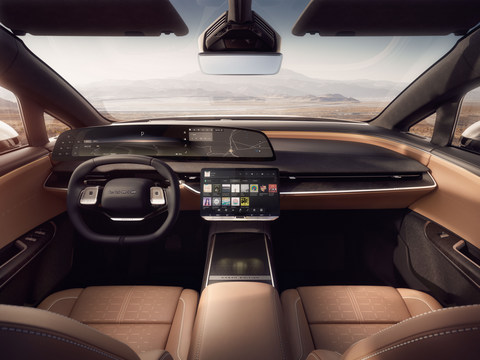Many Changes Are Coming Quickly
The world is increasingly unpredictable, and the automotive industry is feeling it. In addition to the CASE (Connected-Autonomous-Shared-Electrified)-driven transformation of the industry, a combination of additional internal and external factors is piling on complexity. The United Auto Workers strike in the U.S. is already affecting the industry, even though it has now been resolved. Additionally, Ford has just announced a ‘resizing’ in plans to build a $3.5 billion battery plant in Marshall, Michigan, citing a need to reevaluate how best to ‘competitively run the plant.’ In this simmering soup of uncertainty, two macro trends are rising: electrification and connected vehicles.

Electrification
Driven largely by regulatory and legislative mandates, the industry is investing billions in electrification and related initiatives, such as new battery manufacturing facilities, battery chemistry research, charging infrastructure, assembly plant modifications/upgrades and dedicated EV platforms. Some OEMs plan to discontinue internal combustion engine (ICE) vehicles altogether in the next few years. This dynamic is reshaping the competitive landscape as new entrants challenge the status quo of established brands.

Despite these efforts, the uptake of EVs has been uneven: The segment is growing most rapidly in Asia Pacific, significantly in Europe, but less so in the Americas. Undeterred, regulators around the globe continue to push lofty emissions targets, despite automakers’ concerns about their achievability. Several factors drive these concerns, such as lack of charging infrastructure, range limitations, affordability, weight, battery mineral availability, grid capacity, consumer demand and impact on financial performance. EVs also could have significant impact on traditional automotive jobs, as EVs have fewer components and require far less labor to assemble.
While Tesla remains the undisputed EV market leader, and brands such as Cupra and Polestar are on the rise, the largest European car makers, Volkswagen and Stellantis, are struggling to gain share with their main brands. In the U.S., EV inventories are at all-time highs, and traditional dealers are concerned about their bottom lines, especially since they have had to make large investments in capabilities to sell and service EVs. Moreover, Tesla, Lucid, Rivian and others are eschewing the traditional dealer model and selling direct to consumers.
Connectivity
The increase in vehicle connectivity, and the growing role of software in defining vehicle performance, safety and user experience is another major driver of the transformation. Through the on-board user interface, drivers can personalize their in-vehicle experience, and purchase or subscribe to additional features such as heated seats, additional horsepower and so on. Drivers can turn features on and off based on need–for example, only subscribing to heated seats during the winter. Software-driven connectivity also provides curated access to in-vehicle services such as navigation, roadside assistance, retail, dining and entertainment. These capabilities significantly increase software’s share of the vehicle’s overall value and are driving exponential growth in its complexity. By some estimates, vehicles will contain 500-700 million lines of code (LOC) by 2025. By contrast, a typical smartphone or fighter jet contains 20-40 million LOC.

While software-based vehicle attributes may provide new revenue streams and an enhanced customer experience, they pose challenges for traditional OEMs, who now have to operate with the speed and agility of a software company, instead of that of a traditional manufacturer. In this regard, pure-play EV-native companies like Tesla, Lucid and Rivian have an advantage: They are primarily high-tech companies and have these capabilities already embedded in their DNA.
All of the above underscore the industry’s uncertainties, and they present companies with a choice: adapt to the changes and establish a foundation for future success, or risk getting stuck on a dead-end street.
Future Success
How should auto companies set themselves up for ongoing success?
OEMs and suppliers will need to implement more agile, adaptable, and sustainable processes and technologies. They must move toward cloud-native, data-driven and holistically integrated “smart” platform-based technologies that enable real-time multi-enterprise collaboration between ecosystem partners. This digitalization must extend across the entire value chain—from product development through manufacturing, supply chain operations, sales and marketing, and after-sales and service. The foundation for this is modern, industry-specific enterprise resource planning (ERP).
The cloud platform is the repository of all types of data—transactional/structured as well as unstructured (audio, video, graphic, web, social)—from integrated applications, which can be mined for actionable insights with advanced analytics and AI/ML tools. Moreover, cloud platforms are vastly more secure than legacy systems, which is a critical consideration in an increasingly dangerous cyberworld.
CASE is driving the transformation of the industry at ever-faster speed, adding to the challenges posed by an increasingly unpredictable world. Outdated, siloed legacy IT applications no longer cut it. Cloud-native, industry-specific, data-driven digital collaboration platforms are the essential tool. Auto companies must act now to control their destinies, or risk extinction.
